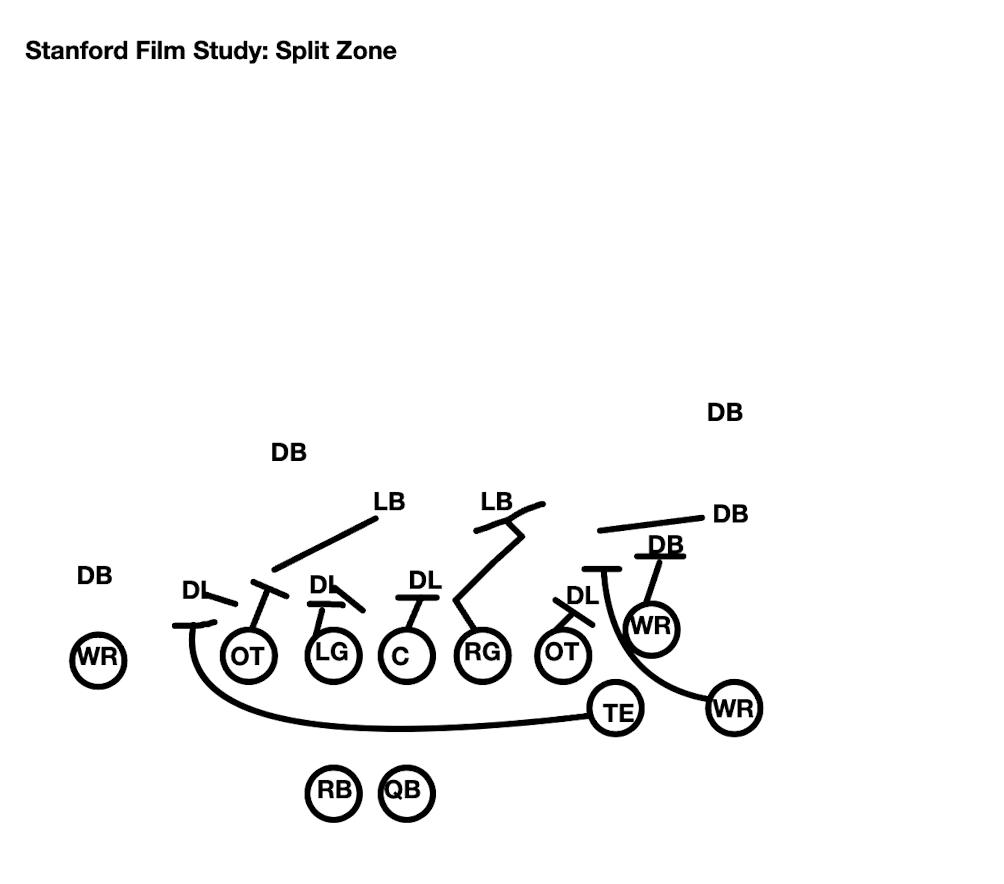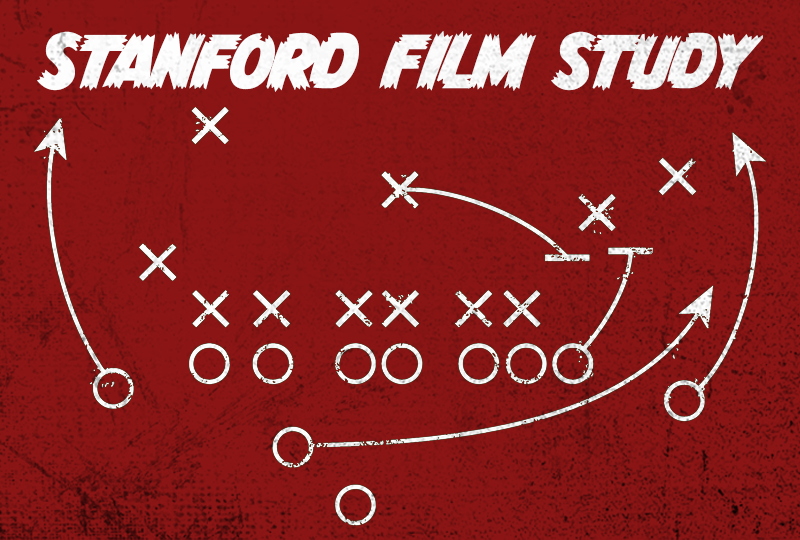Under head coach David Shaw, Stanford’s running game primarily consists of a mix of gap scheme and zone runs. In an earlier installation of Film Study, we took a look at power, which is a gap scheme run. This article will examine split zone, a zone running play.
The Cardinal used split zone plays in the red zone against USC two weekends ago. But to understand why the play worked for Stanford, it’s important to understand the principles of inside zone runs and how the split zone variant can help mask zone deficiencies.
How does split zone work?
The rules of inside zone can differ by team, but they’re usually fairly simple. If there is a defender in a lineman’s play side gap, then they must engage him. If no defender exists in the play side gap, then the offensive lineman can double team the defender to his back side, and then work his way up to the linebacker. However, sometimes, coaches may even tell their players to immediately go to the second level instead of engaging in double teams.
However, in inside zone, the offensive tackle to the back side may be tasked with blocking the weak side EDGE instead of blocking the play side. This could potentially open up the B gap for penetration by linebackers and safeties. While this might not be as much of a problem between the 20-yard lines, it becomes more dangerous near the red zone, when defenders are in tighter formations.
In order to deal with the back side EDGE player, some teams will utilize option plays that make the defender choose between guarding the quarterback or running back. At other times, offenses will use a halfback or fullback, and have them move opposite of the play side to engage with the EDGE player. This is called a split zone.
Stanford utilized the split zone against USC to score their second touchdown of the game.

At the snap of the ball, the offensive line moves in unison to the right and block defenders who are in their zone. The play side tackle blocks the EDGE, the center blocks the 1-technique, and the left guard takes on the 2-technique who steps into his zone. Meanwhile, the weak side tackle takes on the will linebacker who comes into his zone. Since nobody comes to the play side zone of the right guard, he double teams the 1-technique with the center, and then works his way up to the mike linebacker. Junior tight end Benjamin Yurosek comes to the back side and blocks the weak side EDGE player. Fifth-year Michael Wilson and senior Elijah Higgins also set good blocks on the perimeter.
This opens up a hole for junior running back E.J Smith, who’s able to take it into the end zone and bring the Cardinal back within two scores.
Stanford can also run play action out of split zone. The Cardinal utilized split zone play action against Oregon State last year for their first touchdown in the game. While the entire offensive line stepped to the right for their zone blocks, Yurosek came back to the weak side. But instead of blocking the weak side EDGE, Yurosek ran to the flat, where he got outside leverage on the Oregon State defenders. Sophomore quarterback Ari Patu faked the hand-off and then threw it to Yurosek, who was able to outrun the Oregon State defenders for a touchdown.
Look for Stanford to employ split zone and its play action variant in the red zone the rest of the season.
